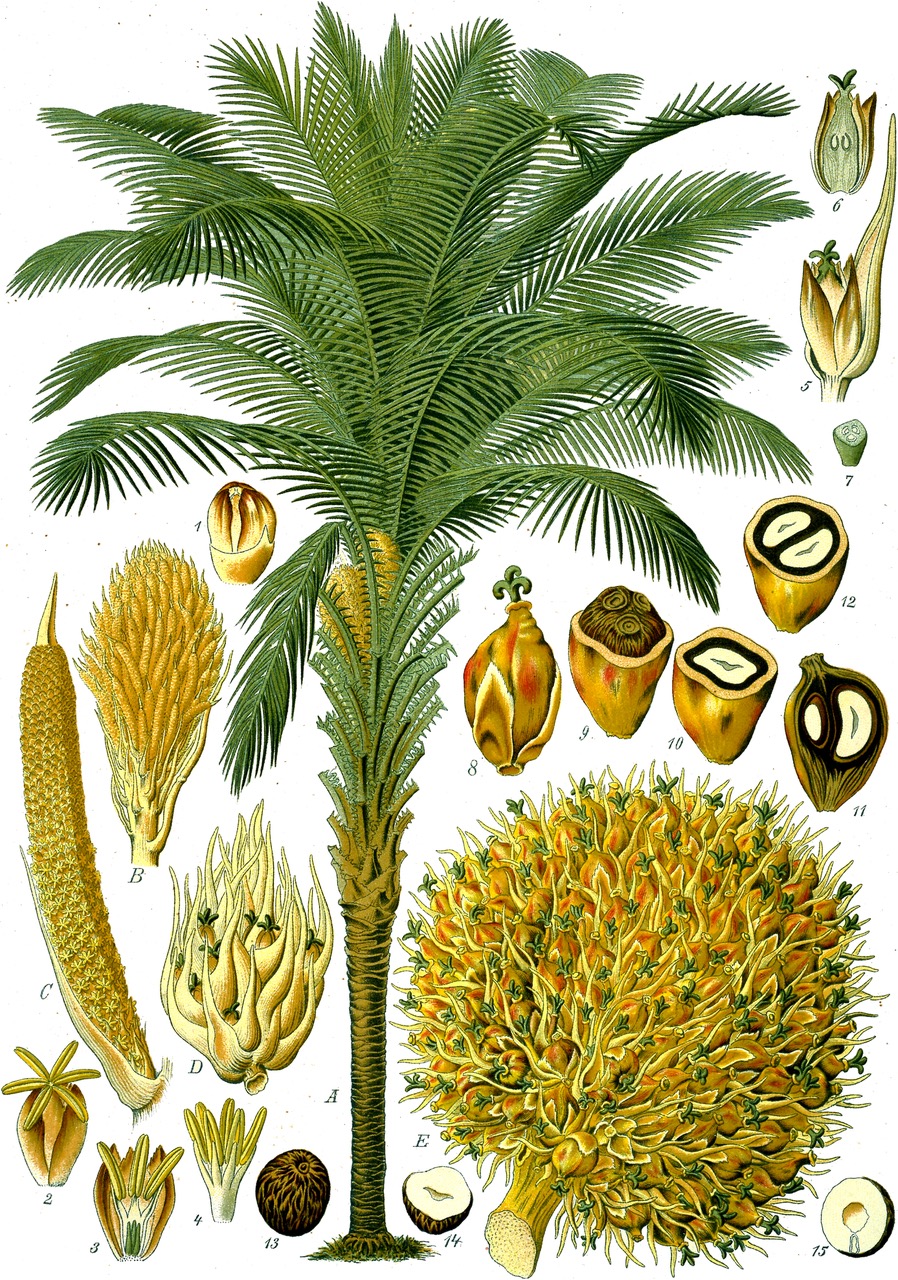
“Plantations are back”: palm oil in São Tomé
Driving south through São Tomé’s national road n. 2 we are welcomed by “the flourishing palm groves of Agripalma”. Oil palms reign supreme over that territory, creating a green pattern of staggering geometric regularity. When the fog lifts, it is possible to see the Pico Cão Grande and what remains of the primary rainforest of the Obô Natural Park. Even if oil palms have been growing in this small island in the Gulf of Guinea for centuries, the development of a palm oil industry is rather recent and a direct response to the world’s voracious appetite for this commodity. Together with the ruins left by the Portuguese empire, palm groves might be considered the most daunting legacy of colonialism.
A fragment of São Tomé oil pam plantations facing Pico Cão Grande.
Source: Google Maps and Marta Macedo
The roots of Agripalma lie deep in the past. The origin of the Belgian holding that owns Agripalma – Socfin (Société Financière des Caoutchoucs) – dates back to 1909 in Congo. From colonial Congo, Socfin expanded to become a global enterprise. Producing rubber, palm oil and coffee in Africa and Southeast Asia, it survived the decolonization and nationalization processes of the 1950s and 1960s and, with the support of supranational organizations such as the World Bank and the International Monetary Fund, it kept profiting from business with new sovereign states. In the last decades, Socfin has earned an impressive record of alleged abuses and malpractices: from irregularities in land acquisitions to poor working conditions, from disrespect for local communities to environmental crimes.
In the history of São Tomé, Agripalma is just the last chapter of an extended story of exploitation of both people and nature. The island is a perfect space to examine the materiality of imperialism, capitalism and racism in the longue durée. Over the last 500 years its trajectory was shaped by different plants – sugarcanes, coffee and cocoa trees –, by various forms of land dispossession and forced racialized labour regimes, and by a specific production system – the plantation. Such agro-industrial complexes aimed at the intensive cultivation of monocrops for export brought waves of ecological destruction and human abuse.
A transnational process
“Plantations are back”, wrote the anthropologist Tanya Murray Li, about Indonesia’s oil palm plantation zones. Since the turn of the twenty-first century, the palm oil sector is leading what analysts called a global land-grab. As Li pointed out “the polemical term “grab” usefully drew attention to what was being taken away: customary land rights, diverse farming systems, and ecological balance.” The emergence of palm oil plantations in São Tomé is part and parcel of this transnational process.
Agripalma was established in 2009 trading 5000 hectares of land for quick cash, very much like a vulture on a body carcass. Sustaining former dependency relations drawn along racial lines, the company preys on weak states and vulnerable people. Its scavenger-like quality also comes from the fact that Elaeis guineensis, from where oil is extracted, can effectively take over dead plantations. Contrary to other crops, it grows successfully in secondary forests.
Elaeis guineensis in Hermann Adolph Köhler, Köhler’s Medizinal-Pflanzen, 1887.
Source: Wikimedia
The area occupied by oil palms in São Tomé seems modest, mostly when compared with the whole 200.000 hectares Socfin “develops” around the world, but its local impact is massive. Consuming roughly 10% of agricultural land, the industry employs less than 1% of the island’s labouring population. To make space for Agripalma, the state expropriated land from small and mid-range farmers, without compensation, and turned a blind eye on the occupation of forest areas in the Natural Park’s buffer zone. The biodiversity loss and the threat posed to endangered and unique bird species are yet to be evaluated. São Tomé’s government also gave Agripalma the monopoly to fabricate palm oil. The local factory exported the first 500 tons in December 2019. However, the facilities were designed with more ambitious plans in mind: they are able to process up to 10000 tons of oil per year.
In 2009, Agripalma fought for a land grant in the neighbouring island of Príncipe. People in Príncipe rebelled against the project, but mainly the project clashed with the initiatives of other private investment groups. The South-African venture capital fund HBD (Here be dragons) is slowly transforming Príncipe into one of the world’s most exclusive ecotourism destinations. Because oil palm plantations don’t provide the ideal scenario for such luxury resorts, Agripalma lost this battle.
Oil palm plantations are the reiteration of a centuries-old exploitative system of both environments and people. What previous plantation experiences tell us is that these disrupted ecosystems have always created the conditions for their own destruction. It might be possible to anticipate the future of oil palms if we take into consideration the limited commercial lifespan of these trees. After 25 years, as trees become less productive, more difficult to harvest and more prone to pests, they are abandoned. Or replanted, at higher cost. Maybe sooner rather than later, oil palms will get to be, like sugarcane, coffee and cocoa trees, things of the past. What can emerge from those ruins is an open possibility.
Marta Macedo is a postdoctoral researcher at the Institute of Social Sciences, University of Lisbon, affiliated with the ERC Project “The colour of labour: racialized lives of migrants“. Her current work focuses on the circulation of plantation systems (Brazil, São Tomé, Belgium Congo and Cameroon), mixing approaches from the history of science and technology, race and labour history, and the history of capitalism.



0 Comments